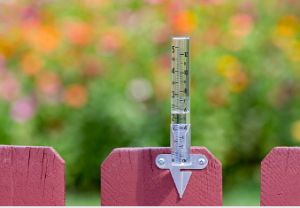A rain gauge is a cylindrical container that collects and stores rainfall. This design prevents the moisture in the rain gauge from evaporating before being measured. Standard instruments are recommended to ensure accurate and reliable measurements, so they should be set up in representative locations. National meteorological institutes typically provide pamphlets with guidelines for standard observation. The World Meteorological Organization (WMO) coordinates these efforts. Various types of rain gauges are available, so choosing the right one for your home may be easy.
Analog rain gauge
 There are two types of rain gauges: digital and analog. The difference between the two is the calibration of the latter. To determine the level of precipitation in your area, you first need to choose the right rain gauge for your area. Digital rain gauges measure rainfall automatically, and the data is shown on the screen. Analog rain gauges are characterized by lines and numbers on the sides of the tube. They can be read by checking the nearest number to the base.
There are two types of rain gauges: digital and analog. The difference between the two is the calibration of the latter. To determine the level of precipitation in your area, you first need to choose the right rain gauge for your area. Digital rain gauges measure rainfall automatically, and the data is shown on the screen. Analog rain gauges are characterized by lines and numbers on the sides of the tube. They can be read by checking the nearest number to the base.
A digital rain gauge requires batteries and is typically installed indoors. Both types require a time setting mode and an alarm. A digital gauge can also track rainfall and display temperature, humidity levels, distance, and height. Changing the batteries can also cause the rain gauge to lose historical data. A digital rain gauge can monitor rainfall levels over a long period. However, some rain gauges require a professional to install.
A digital rain gauge is an excellent option for anyone who doesn’t want to deal with the calibration process. Its LCDs rain data every 16 seconds. In addition to providing the current rainfall event, it can also show the previous 24 hours and seven days. The digital rain gauge can be cycled through two customizable periods. It has a built-in alarm that will warn you if there is a significant rain event or if flood conditions are possible.
Digital rain gauge
The AcuRite Digital Rain Gauge is a great option for looking for a reliable rain gauge. Its self-emptying wireless rain collector ensures accurate rain measurements, and its history recording features help you see how much rain has fallen over time. There are also plenty of other features to consider, including a self-adjusting dial, a pause function, and even the ability to save your rain data.
A rain gauge is an important tool for predicting the weather in your area. A good rain gauge should give you an idea of how much rainfall is falling at any given time, and you can adjust it to get more accurate readings based on the current rainfall. It also has an LCD that shows indoor temperature and humidity readings. A built-in Intelli-time clock also helps set the rain gauge to reflect daylight savings time.
Another major benefit of a digital rain gauge is its timeliness. These rain gauges measure every drop of rain and report the rise or fall in water levels in the collection tube immediately. It allows you to know when to turn on and off your sprinklers. If you have a garden, the information you gain will help you evaluate where to plant crops and when to harvest them. In addition to providing you with the most accurate rain data possible, digital rain gauges may also be integrated with smart devices.
Tipping bucket rain gauge
The Tipping bucket rain gauge is a convenient and effective way of measuring rainfall, but it is not as accurate as a standard rain gauge. Sometimes, the rain stops before the lever reaches its predetermined level, and it may take one or two drops to tip the bucket. However, it can be a good indicator of the character of a rainstorm. Its main disadvantage is that it tends to underestimate the amount of rain, especially during periods of heavy rainfall.
Global Water makes an excellent tipping bucket rain gauge with thermoplastic components and includes a levelling screw and bullseye level. This model discharges measured precipitation through a collection tube and is suitable for moderate and cold climates. Another model is the Tipping Bucket, attached to the Netatmo Urban Weather Station and transmits data via radiofrequency. With this tipping bucket rain gauge, you can easily track rainfall rates and totals.